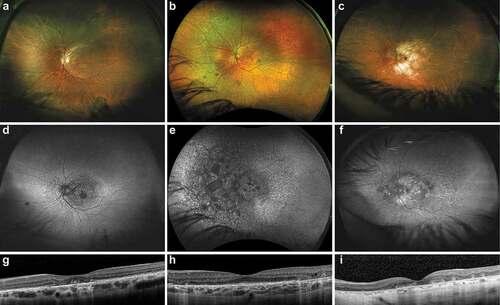Figures & data
Table 1. Genetic and clinical data
Table 2. Disease-associated alleles reported to date
Figure 1. Location and features of disease-associated RCBTB1 variants.

Figure 2. Fundus imaging of patients with RCBTB1-associated retinal dystrophy.

Figure 3. Evolution of macular findings in a single patient with RCBTB1-associated retinal dystrophy.

